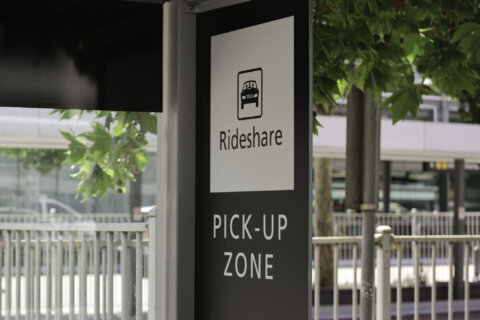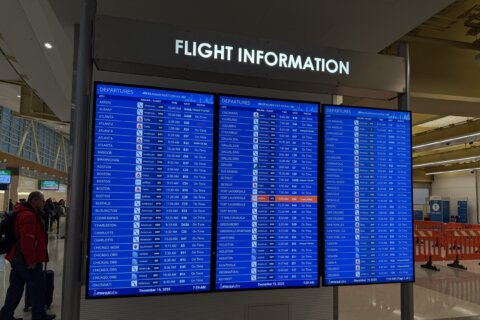Senior citizens will soon be asked to pay more to visit National Parks and federal recreation areas in retirement. The price of the senior pass to National Parks will increase from $10 to $80 on August 28, 2017.
The America the Beautiful — The National Parks and Federal Recreational Lands Senior Pass , which covers lifetime visits to National Parks, has been $10 since 1994. The price increase is the result of legislation passed by congress on December 16, 2016. The National Park Service says the price increase will be used to enhance the visitor experience in parks . The additional revenue from the higher-priced senior passes purchased at parks will go into the National Park Foundation Endowment and a National Park Centennial Challenge Fund. Here’s what the price increase means for senior citizens planning to visit National Parks during their retirement years.
[See: Bargain Ways to Visit National Parks.]
Eligibility requirements. U.S. citizens and permanent residents who are age 62 or older are eligible for the senior pass. Proof of age and residency is required. Passes can be purchased at federal recreation sites that charge fees, online or via mail from the United States Geological Survey. However, a $10 processing fee is added to the pass price when it is not purchased in person.
Senior pass benefits. Senior passes provide lifetime free admission to over 2,000 federal recreation areas and cover standard day-use fees. The pass admits up to three adults in addition to the pass holder or all the passengers in the pass holder’s car. In some cases there might be senior pass discounts on expanded amenity recreation fees, such as swimming, boat launching, camping and guided tours. “The $10 senior pass was probably the best bargain in the country, and $80 is still a pretty fair deal yet,” says Michael Oswald, author of “Your Guide to the National Parks.” “The senior pass is for the rest of your life. It definitely pays for itself.”
A new annual pass. In addition to increasing the price of the lifetime senior pass to $80, the new legislation introduces an annual senior pass for $20, which is valid for one year after it is purchased. Retirees who purchase four annual senior passes will have the option to trade them in for a lifetime pass. “That way, if somebody isn’t sure they want to invest $80 or is just going to visit a couple of parks, they can just get an annual pass,” says Kathy Kupper, a spokesperson for the National Park Service. “If you buy the annual senior pass, it’s cheaper than visiting one of the 10 National Parks that charge $30.”
[See: The Top Travel Destinations for Retirees.]
Existing passes remain valid. Retirees who purchased lifetime senior passes in the past can continue to use them. The benefits of existing senior passes will remain the same, the NPS says. However, if the pass is lost or stolen the NPS will not replace it, and a new pass will need to be purchased.
A backlog of orders. The demand for senior passes has increased in the months leading up to the price increase. While 800,000 senior passes were distributed in 2016, this year the NPS is anticipating 2.5 million passes will be sold, Kupper says. “Typically in a day there would be 100 people who would apply for the pass online, and we have been getting 10,000 applications a day online.” The National Park Service printed and distributed hundreds of thousands of passes to facilities around the country and has increased staffing at the online processing center.
However, there is now a backlog of orders, and it is taking several months for retirees to receive their senior pass. Retirees who don’t receive a pass in time for their National Park trip are allowed to use the order confirmation from their online pass purchase and a matching photo ID to enter parks until the backlog is cleared. The USGS says all eligible senior pass orders postmarked before August 28 will be processed at the $10 price. Some sites that have run out of passes are issuing rain checks to eligible retirees who wish to purchase a pass. Contact the park you plan to visit before traveling there to confirm the availability of passes or rain checks.
[See: 10 Financial Perks of Getting Older.]
Some sites are already free. Many parks are free for everyone, even without a pass. Only 118 of the 417 National Park Service sites charge an entrance fee. The National Park Service provides 10 free admission days at parks that charge fees in 2017. And specific groups of people, including fourth-graders and their families, active duty military, people with permanent disabilities and park volunteers, can qualify for free passes. “There are ways to make it economical, if that’s what someone wants or needs to do,” says Phil Francis, a retiree who worked for the NPS for 41 years and volunteers at the Coalition to Protect America’s National Parks. “You can go into the Great Smoky Mountains National Park or the Blue Ridge Parkway and there is no fee at all. Many of the historical parks are free.”
Francis has not bought a senior pass and doesn’t plan to. “I’m lucky enough to be able to buy admission when I get to the entrance fee gate or station,” Francis says. “I like to donate to our National Parks. I think they are very important to our country. I’d like to maybe contribute a little more.”
Emily Brandon is the author of “Pensionless: The 10-Step Solution for a Stress-Free Retirement.”
More from U.S. News
10 Ways to Get Ready for Retirement After Age 50
10 Classic (and Unique) Retirement Gift Ideas
10 Tips for Finding a Great Place to Retire
The National Park Service Raises Prices for Seniors originally appeared on usnews.com







